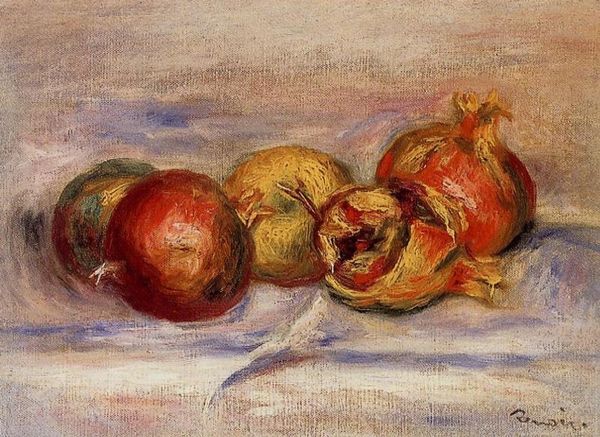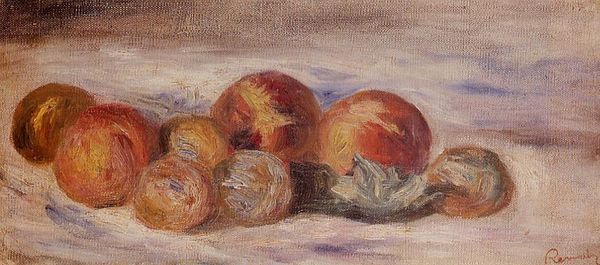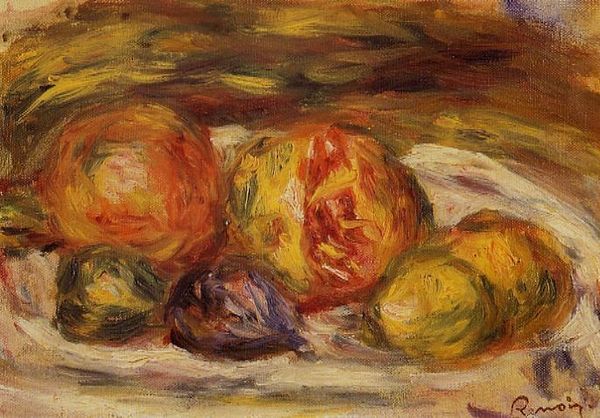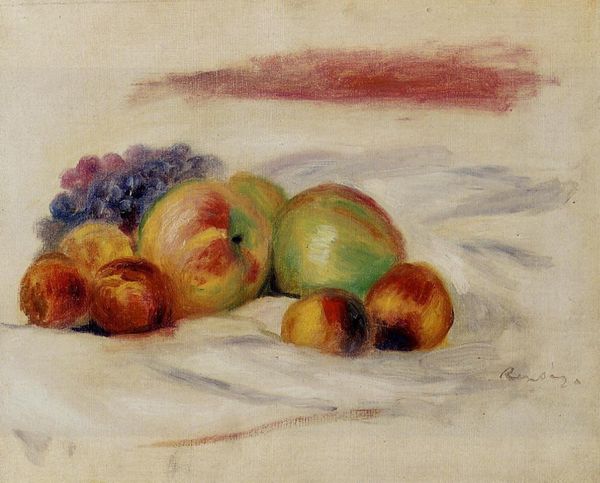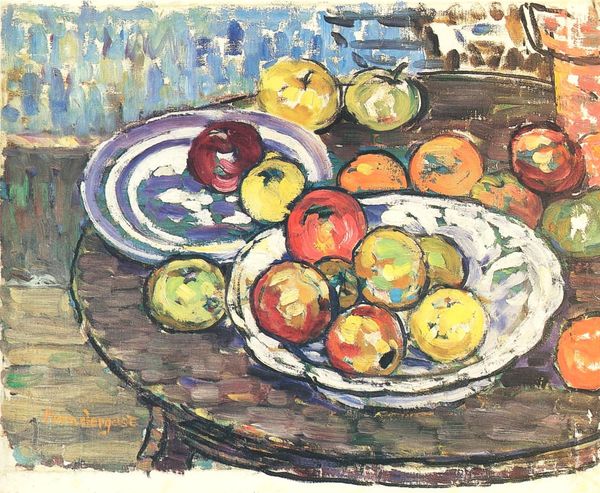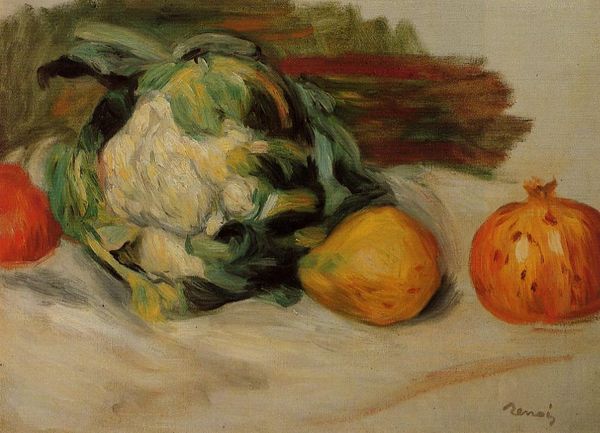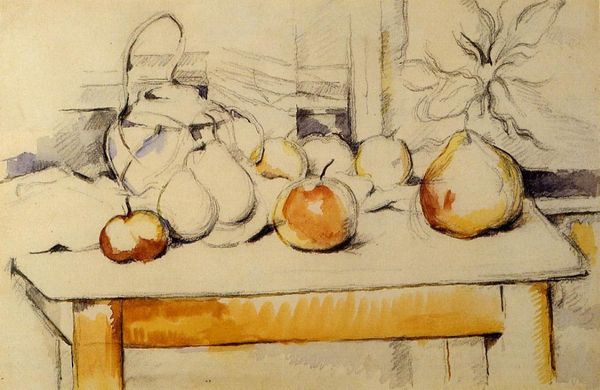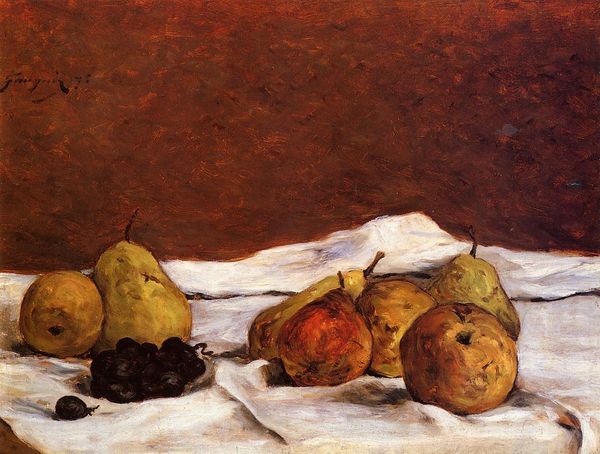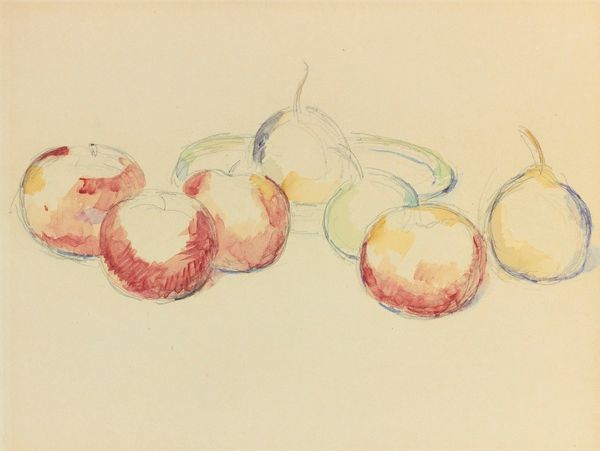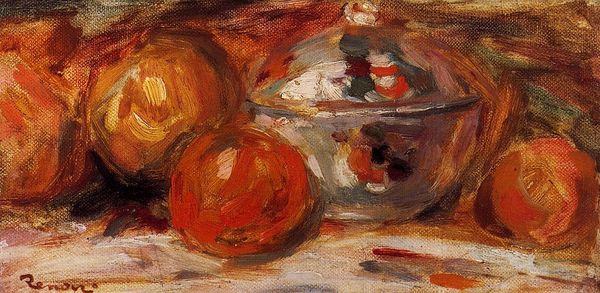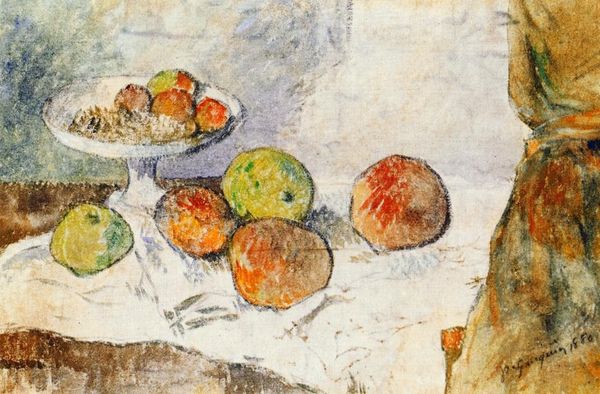
watercolor
#
still-life
#
impressionism
#
landscape
#
watercolor
#
watercolour illustration
#
post-impressionism
Copyright: Public domain
Curator: Before us is Paul Cézanne's "Fruits," created around 1885. It's a watercolor work currently held in a private collection. Editor: The watercolor imbues the fruit with a luminous quality. There's something unfinished, or perhaps fleeting, about the arrangement. Curator: Precisely. Cézanne's approach to form here is paramount. Notice how he builds volume and mass through carefully layered washes. It challenges the conventions of academic still life, breaking down forms to their essential geometry. Editor: I am also noticing how he abandoned the high realism of earlier still-life painters and seemed more interested in color to shape. His technique also allowed light to saturate. Is that a nod to impressionist trends of his time? Curator: Certainly, we observe Impressionist influences in his use of color and light. However, Cézanne deviates by using these elements to construct solid forms, rather than dissolve them into atmospheric effects. Note his famous use of "constructive brushstrokes", in the small patchworks of hues that define these fruits. Editor: Tell me more about that "constructive brushstrokes" idea, especially considering Cézanne’s role within Post-Impressionism. Curator: He uses these color planes to create a sense of depth and solidity, breaking away from traditional linear perspective. It's not merely representation, but almost a reimagining of perception itself. He captures something beyond the purely visual. His mark making suggests a unique synthesis of optical sensations and intellectual understanding. Editor: So the artwork seems to challenge and move past societal constraints set for paintings, namely, their accurate reflections of observed space and perspective. Curator: Precisely, this painting’s innovative exploration into pictorial structure shifted still-life tradition from observed depiction to intellectual, compositional architecture, significantly impacting artistic values and future artistic practices. Editor: Thinking about "Fruits," and considering this break from earlier conventions, it feels less like a straightforward portrayal of a bowl of fruit and more an analysis of light, shadow, and form that would inspire generations to come. Curator: Indeed. Cézanne transforms ordinary subject matter into a profound meditation on perception and artistic creation.
Comments
No comments
Be the first to comment and join the conversation on the ultimate creative platform.

